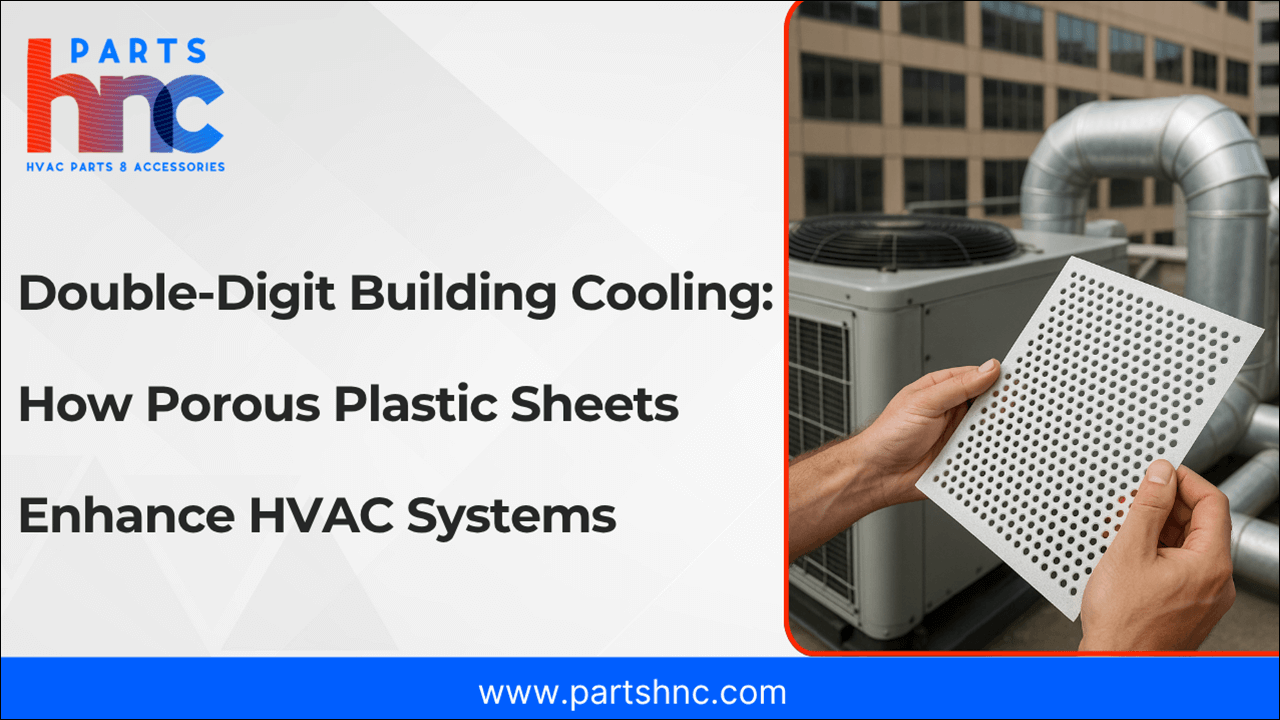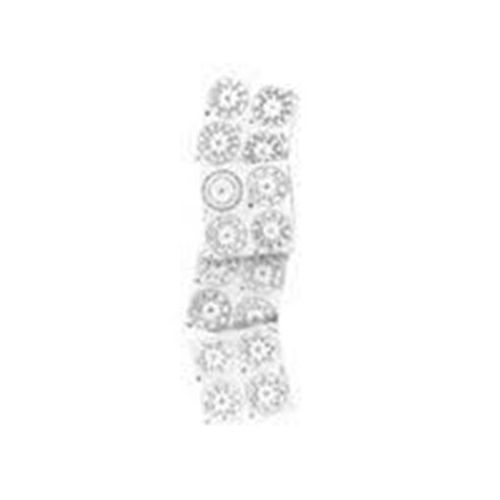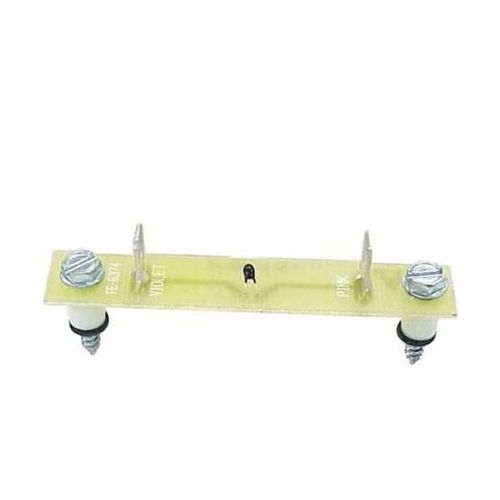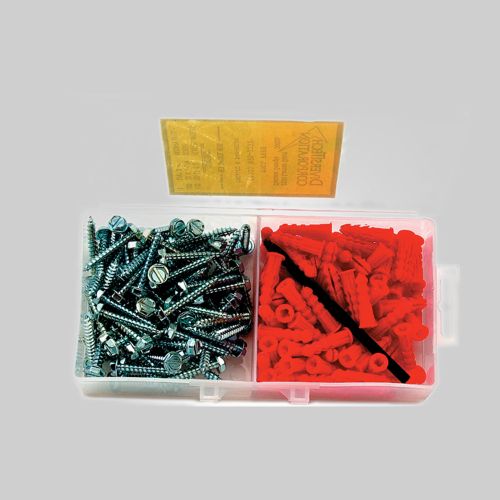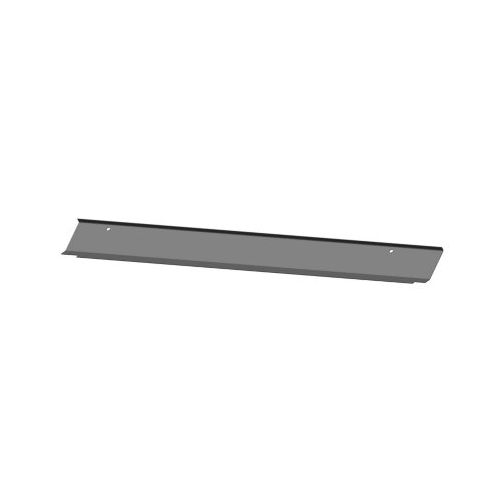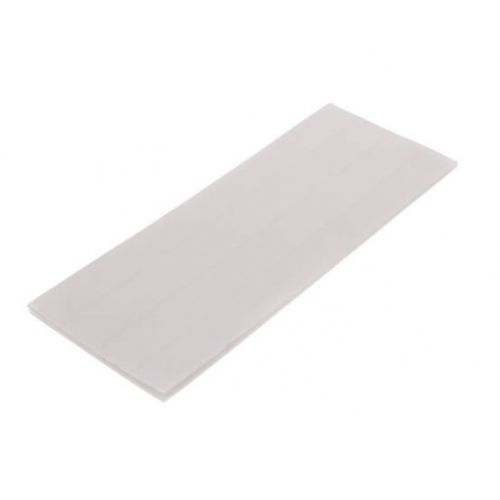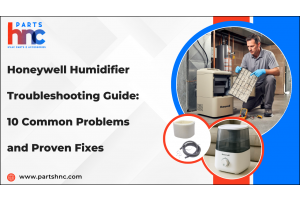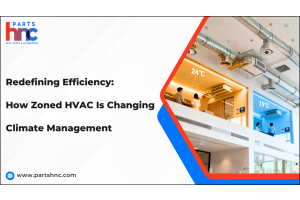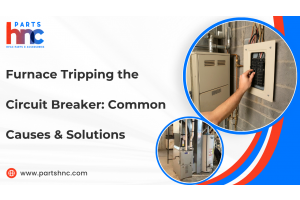Double-Digit Building Cooling: How Porous Plastic Sheets Enhance HVAC Systems
In today’s drive for energy efficiency, HVAC systems face growing demands to deliver strong performance while reducing energy use. One promising innovation is the use of porous plastic sheets, especially in equipment like air handling units (AHUs). These materials improve airflow control, filtration, and moisture management. Integrating porous plastics into AHUs, ducting, and heat exchangers can boost cooling efficiency by double digits. Their microstructure enables better air dispersion and resists condensation, reducing system strain and extending equipment life. As climate challenges grow and sustainability goals become more urgent, porous plastic sheets offer a cost-effective, eco-friendly upgrade for HVAC systems, helping buildings stay cooler, greener, and more efficient.
What Are Porous Plastic Sheets?
Porous plastic sheets are specialized materials made from polymers that contain a network of tiny, interconnected pores. Unlike solid plastics, these sheets allow air, gases, or liquids to pass through in a controlled manner, making them highly versatile for many industrial applications, especially in HVAC systems.
Key Characteristics of Porous Plastic Sheets:
-
Material Composition: Typically made from polymers such as polyethylene (PE), polypropylene (PP), or polytetrafluoroethylene (PTFE).
-
Microstructure: Engineered with microscopic pores that vary in size and distribution depending on the intended use.
-
Permeability: Allows selective passage of air or moisture while blocking contaminants.
-
Mechanical Properties: Can be flexible or rigid, designed to withstand different temperatures and environmental conditions.
-
Hydrophobic or Hydrophilic: Some sheets repel water to prevent condensation, while others absorb moisture for vapor management.
Common Uses in HVAC Systems:
-
Facilitating uniform airflow distribution
-
Acting as low-resistance air filters
-
Managing moisture and preventing mold growth
-
Enhancing thermal insulation and heat transfer
-
Reducing noise by dampening sound vibrations
By integrating porous plastic sheets, HVAC systems achieve better efficiency, durability, and indoor air quality, crucial for modern building cooling solutions.
How Porous Plastic Sheets Improve HVAC Efficiency
Porous plastic sheets play a pivotal role in enhancing the overall performance and efficiency of HVAC systems. Their unique porous structure allows for optimized airflow, better filtration, and moisture control, directly contributing to energy savings and improved indoor comfort.
Key Ways Porous Plastic Sheets Boost HVAC Efficiency:
-
Uniform Airflow Distribution: The porous design helps evenly diffuse air throughout ductwork and vents, preventing hotspots and ensuring consistent temperature control across spaces.
-
Reduced Pressure Drop: Unlike traditional filters, porous plastic sheets provide high filtration capacity without significantly restricting airflow, allowing HVAC fans to operate more efficiently and reduce energy consumption.
-
Moisture Management: Hydrophobic porous plastics prevent condensation buildup by wicking away excess moisture or allowing vapor diffusion, reducing mold risk and prolonging system lifespan.
-
Thermal Regulation: These sheets contribute to better thermal insulation and controlled heat exchange, minimizing energy losses during cooling cycles.
-
Noise Reduction: The porous structure dampens airflow turbulence and mechanical vibrations, resulting in quieter HVAC operation and enhanced occupant comfort.
-
Lower Maintenance Needs: Their resistance to clogging and corrosion means less frequent filter replacements and fewer system repairs, saving both time and money.
By integrating porous plastic sheets, building owners can achieve substantial energy savings, improved air quality, and longer-lasting HVAC systems key factors in sustainable and cost-effective cooling solutions.
Applications in Modern HVAC Systems
Porous plastic sheets have become increasingly valuable in various modern HVAC applications due to their versatility and efficiency-enhancing properties. Their ability to regulate airflow, filter contaminants, manage moisture, and reduce noise makes them a key component in cutting-edge cooling systems.
Key Applications Include:
-
Smart Ventilation Systems: Integrated into intelligent HVAC setups, porous plastic sheets help balance airflow automatically, supporting energy-saving smart controls without mechanical parts.
-
Data Centers and Server Rooms: These spaces require precise cooling to prevent equipment overheating. Porous sheets ensure uniform air distribution and reduce thermal hotspots, protecting valuable hardware.
-
Healthcare and Laboratory HVAC: Porous plastics serve as high-performance filters to trap bacteria, viruses, and pollutants, maintaining sterile environments critical for hospitals and labs.
-
Energy Recovery Ventilation (ERV) Systems: Porous membranes facilitate the exchange of heat and moisture between incoming fresh air and outgoing exhaust, significantly improving energy recovery rates.
-
Green Building Projects: Architects incorporate porous plastic materials to meet LEED and WELL standards by enhancing indoor air quality, reducing energy use, and supporting sustainable design goals.
By leveraging porous plastic sheets, modern HVAC systems achieve enhanced performance, better occupant comfort, and reduced environmental impact, essential for today’s energy-conscious building landscape.
Explore more in this article on key HVAC technology advancements to find innovative solutions that enhance system efficiency, reliability, and sustainability.
Material Selection and Customization for HVAC Needs
Selecting the right porous plastic material is crucial for optimizing HVAC performance. Different polymers and pore configurations serve various system needs.
Choosing the Right Polymer:
-
Polyethylene (PE): Offers chemical resistance and is ideal for general HVAC airflow control.
-
Polypropylene (PP): Provides higher temperature tolerance, commonly used in ducting and filters.
-
PTFE (Teflon): Excellent for high-end systems needing chemical resistance and durability under extreme conditions.
-
Other Options: Nylon and EVA for specialized applications requiring flexibility or antimicrobial features.
Engineering Porosity:
-
Pore Size and Distribution: Tailored to balance airflow and particle capture.
-
Open-Cell Vs. Closed-Cell Structure: Open-cell is preferred for ventilation and filtration; closed-cell may be used for insulation and noise dampening.
-
Thickness and Density: Adjusted to control flow rate, sound absorption, and thermal insulation.
Customization Factors:
-
Match porosity to airflow requirements without causing high pressure drops.
-
Choose hydrophobic or hydrophilic variants based on moisture levels in the application.
-
Ensure mechanical strength aligns with installation conditions (e.g., vibration, temperature variation).
Customizing materials ensures HVAC systems achieve peak efficiency while meeting safety, cost, and environmental standards.
Installation and Integration in HVAC Systems
Porous plastic sheets are flexible and lightweight, making them suitable for both retrofits and new HVAC system designs.
Retrofitting Existing Systems:
-
Easy Replacement: Can replace conventional filters or liners without major structural changes.
-
Drop-In Upgrades: Install in ducts, vents, and heat exchangers to improve airflow and reduce energy usage.
-
Improved System Efficiency: Lower pressure drop improves fan performance and reduces energy draw.
In New Construction:
-
Custom-Fit Designs: Sheets can be molded or cut to exact dimensions for seamless integration.
-
Space-Saving Benefits: Lightweight materials reduce support structure needs and save installation space.
-
Enhanced Ductwork Flow: Optimized airflow paths increase system effectiveness from the start.
Integration Best Practices:
-
Secure sheets with non-corrosive fasteners or clips.
-
Avoid blocking access to critical maintenance areas or sensors.
-
Test airflow rates post-installation to confirm performance improvements.
Whether retrofitting or building new, proper installation of porous plastic sheets delivers immediate efficiency benefits and long-term HVAC system reliability.
Read this article on seamless integration & the future of smart HVAC to understand how IoT-powered smart technologies are revolutionizing HVAC installation and integration.
Environmental and Cost Advantages
Porous plastic sheets contribute significantly to energy efficiency and environmental sustainability while offering long-term cost savings.
Reduced Energy Consumption:
-
Lower Pressure Drop: Requires less fan power to maintain airflow.
-
Improved Airflow Uniformity: Reduces the need for overcooling or overheating zones.
-
Enhanced Moisture Control: Prevents condensation-related energy loss in cooling coils.
Extended Equipment Lifespan:
-
Corrosion-Resistant: Outlasts traditional fiber-based or metal filters in humid conditions.
-
Resists Clogging: Maintains performance over time with less frequent replacements.
-
Protects Key Components: Reduces wear on motors, fans, and coils by improving airflow quality.
Sustainability Benefits:
-
Recyclable Materials: Many porous plastics can be recycled or reused, supporting circular economy goals.
-
Low Environmental Impact: Manufacturing processes for some porous plastics use minimal waste and energy.
-
Green Building Support: Meets sustainability criteria for LEED, WELL, and other certification systems.
The eco-friendly performance of porous plastic sheets makes them a smart choice for sustainable building strategies and operational savings.
Design Considerations and Engineering Best Practices
Proper design and engineering ensure that porous plastic sheets perform optimally in HVAC applications.
Balancing Filtration and Airflow:
-
Match Pore Size To Filtration Goals: Smaller pores capture more particles but may restrict flow.
-
Layering Designs: Use multi-layer sheets to balance filtration and flow performance.
-
Airflow Testing: Verify system airflow capacity to prevent fan overload or short cycling.
Moisture and Thermal Management:
-
Use Hydrophobic Sheets In Humid Zones: Prevents condensation accumulation and mold.
-
Thermal Insulation: Closed-cell variants can reduce heat transfer in critical zones.
-
Vapor Diffusion Management: Keeps air drier, reducing corrosion and microbial growth.
Avoiding Installation Pitfalls:
-
Proper Sealing: Ensure an airtight installation to prevent air leakage.
-
Secure Mounting: Avoid loose fitment that could cause vibration or noise.
-
Access for Maintenance: Design for easy removal and cleaning, or replacement.
By incorporating these design principles, HVAC engineers and technicians can ensure consistent, long-lasting performance from porous plastic components.
Final Thought: Building Smarter, Cooler, and Greener with Porous Plastics
Porous plastic sheets are emerging as a smart, cost-effective solution for enhancing HVAC system performance in today’s energy-conscious building environment. By improving airflow distribution, reducing pressure drop, managing moisture, and increasing filtration efficiency, these materials help HVAC systems operate more effectively while lowering energy consumption and maintenance costs. Their versatility in both retrofits and new constructions, combined with their durability and sustainability, makes them a valuable asset for achieving greener, cooler, and more efficient buildings. As demand grows for smarter, more adaptive infrastructure, integrating porous plastic sheets is not just a performance upgrade, but it’s a forward-thinking move toward future-ready HVAC design.
FAQs
Can porous plastic sheets replace traditional HVAC filters?
While filtration benefits are discussed, the content doesn’t clearly state if porous plastic sheets can fully replace conventional filters. Clarifying this would help readers understand their role in filter systems.
How easy is it to install porous plastic sheets in existing HVAC systems?
Installation is generally covered, but details about the simplicity and practical steps of retrofitting porous sheets are limited. More insight on the ease of installation would be helpful for facility managers.
Do porous plastic sheets require special maintenance?
The content mentions lower maintenance needs but lacks specifics on what maintenance is required or how it compares to traditional materials. This information would assist in evaluating long-term operational costs.
Are porous plastic sheets environmentally friendly?
Environmental benefits are noted, but without detailed information on recyclability or certifications. Explaining their sustainability credentials would strengthen the eco-friendly argument.


